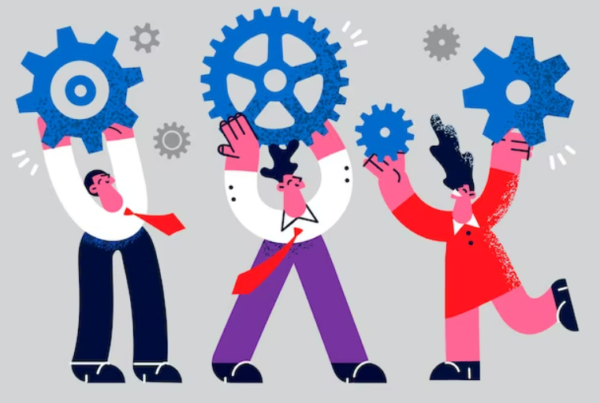By proactively investing in employee development, you can ensure that your workforce is satisfied and generating value to your company on a constant basis. You’ll learn how to enhance your processes and build stronger teams in this guest essay.
Do you want your staff to keep adding value to your company?
That’s a question that most organizations and leaders will answer with a resounding ‘yes.’ And the best way to do that is to brush up on your employee development knowledge. You can aid your employees’ productivity, motivation, and time management abilities by taking a proactive approach to employee development.
This is how you do it.
1. Ensure that learning is both accessible and ongoing
When it comes to staff development, there is no such thing as a one-time project.
Continuous and accessible learning is required. Your employees may feel deprived of the opportunity to advance in their jobs and as individuals if learning is inaccessible or interrupted. They may believe that their marketability is being eroded, and they may be unable to see a future for themselves in their current position.
Fortunately, there are a few options for ensuring constant and accessible learning.
Research
Find out how your staff are learning now, what they like and dislike about it, and how they think it could be improved. You can do this by conducting employee satisfaction surveys.
Prioritize and normalize
Recognize the value of allowing your people to grow. It’s critical that your staff be aware of this, therefore inform them that employee development is a top priority for you.
Every employee should be addressed individually
Because no two people learn in the same way or at the same rate, staff development should not be treated as a one-size-fits-all approach. Make personalized learning maps for each employee instead.
2. Emphasize soft skills
Soft skills are non-technical abilities such as communication, time management, and conflict resolution that are relevant to how your workers work.
It’s critical to concentrate on these abilities because they’re crucial to how people add value to your company.
Employees with strong communication skills and emotional intelligence can communicate more effectively with customers (and hence improve customer experience) and with one another.
They will be better able to communicate messages, present ideas, and avoid misunderstandings as a result of this.
Employees should be encouraged to improve their soft skills.
Allow all staff to put their soft skills to good use. This can involve group skills training workshops, of which there are many to choose from.
Here are a few examples.
Dispute Resolution
Your team may improve their verbal and written communication skills, learn to interpret and understand nonverbal communication signals, and improve how they communicate during disagreements and decision-making with a training and development program like Clear Communication.
Communication that is clear
You may improve your team’s overall communication skills with a training like Clear Communication. Employees will learn how to improve their verbal and written communication abilities, recognize nonverbal communication signals, improve the effectiveness of their presentations, and communicate effectively during conflicts and choices during this program.
Emotional Intelligence (EQ)
You may improve your team’s self-awareness and social abilities with the Emotional Intelligence (EQ) leadership training and development program. This includes increasing self-awareness, learning to self-regulate actions, improving social skills for leadership, employing emotionally intelligent motivators, and cultivating empathy.
Allow employees to chart their own path
Don’t make kids learn soft skills via force or coercion. For a training session to be effective, they must be genuinely invested in it.
Hiring employees that are eager to learn is a priority
From technical to emotional skills, the majority of skills can be taught. As a result, choose persons who want to learn above those who already have technical abilities when hiring.
While hiring has become more difficult since the outbreak, there are still some actions you can take to optimize your recruiting, interviewing, and onboarding of new staff.
3. Make cross-departmental collaboration easier
When various departments “join forces” and work together, this is referred to as cross-departmental collaboration.
It’s usually required when one department is unable to handle a problem on its own. And if that problem isn’t addressed, the department—and, eventually, the entire company—will crumble.
It’s crucial for employee growth since it fosters trust and respect. Individual employees are also encouraged to accept responsibility for their conduct. It also develops a sense of joint responsibility among departments.
There are a few approaches you may take to get the most out of your cross-departmental collaboration.
Empathy should be cultivated
Encourage personnel from various departments to become acquainted with one another’s responsibilities. The goal is for them to be able to see things from a new, more inclusive perspective and to be more understanding.
Set a good example
Organize and lead regular meetings. During brainstorming meetings, encourage everyone to share their thoughts.
All staff should be congratulated on their achievements
Recognize everyone’s contribution to a project. If the project goes well, have a small celebration or an interdepartmental mixer.
Check out this list of ways leaders may recognize and reward outstanding performers for additional information.
Participate in Team Building Activities
Using team building activities to foster stronger interdepartmental links between colleagues is another fantastic strategy to support cross-departmental collaboration. When teammates establish stronger personal relationships with one another, they are more inclined to support one another and collaborate to reach a common goal.
4. Encourage mentoring and coaching
Coaching and mentoring are examples of “assistance interventions.” They assist employees in developing as persons. They also assist you in presenting your staff with clear definitions of work settings and roles based on a knowledge of their approach to adding value to your company.
What are the advantages of coaching and mentoring? Both for your staff and for your company, this is invaluable.
They train an employee how to work in the “proper” and “better” way. As a result, they promote an employee’s overall pleasure by increasing their confidence in their own talents, improving job satisfaction, and increasing overall happiness.
Mentoring can be introduced in a few simple steps:
- Introduce your goals: Inform them of your objectives and the steps you’ll take to reach them. Make sure they fully comprehend your goals and are on the same page as you.
- Set aside funds for the complete program in your budget: Formalize the program by, for example, drawing contracts or awarding certificates of participation. Coaching and mentorship become more formalized, which encourages them to take the program seriously.
5. Make a list of objectives and keep track of your progress
Setting objectives leads to improved performance. Goals instill confidence and tenacity in your staff in addition to invigorating them. They also act as motivation to produce excellent work.
When it comes to setting company goals, be cautious. You’ll be setting your employees up for failure if you don’t. To avoid this, make sure your goals are SMART – specific, measurable, actionable, results-oriented, and time-bound.
The work should not end there. While having goals is beneficial, you won’t be able to achieve them until you track your progress.
So, what measures can assist you in doing so efficiently?
Quality
The value your employees bring to your company is determined by the quality of their work. As a result, you should examine their work on a frequent basis and provide feedback as needed.
Effectiveness
Work procedures can be streamlined if staff are effective. They can meet your objectives and offer value to your company with minimum supervision.
Improvement
Check to see if your employees are putting what they’ve learnt during their time with you to good use. This metric might assist you figure out if they’re worth your time and money.
Remember, it’s an investment you’ll be glad you made in the future. You’re investing in your company and your employees when you invest in them.
Employee development is a significant task. It’s also critical that you provide them with a mentally secure working atmosphere.
It encourages good employee growth by allowing people to focus on their work and how they approach work by making them feel safe to ask questions, present random ideas, and talk freely in any way. The more secure they feel, the more productive they will be.




